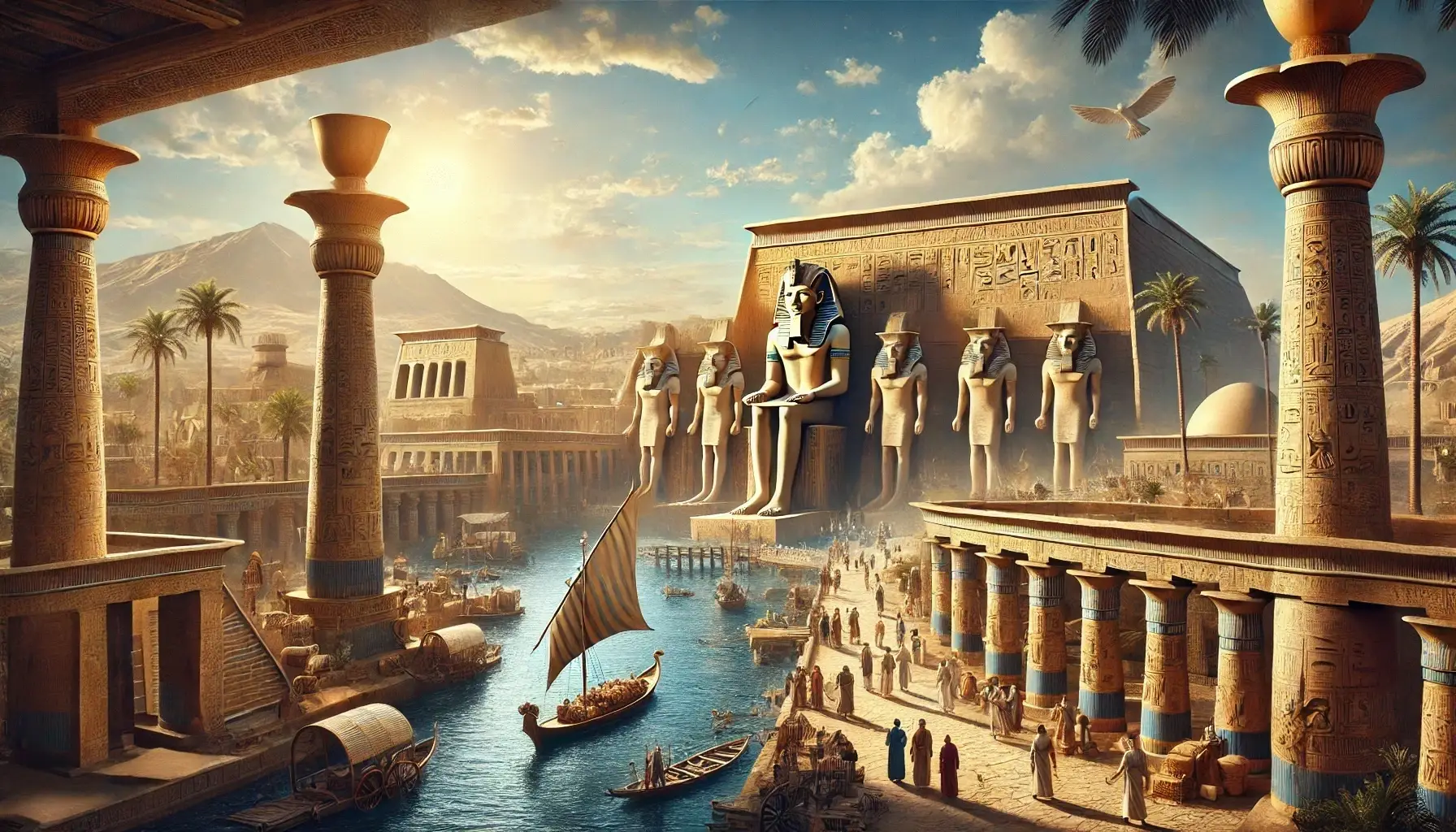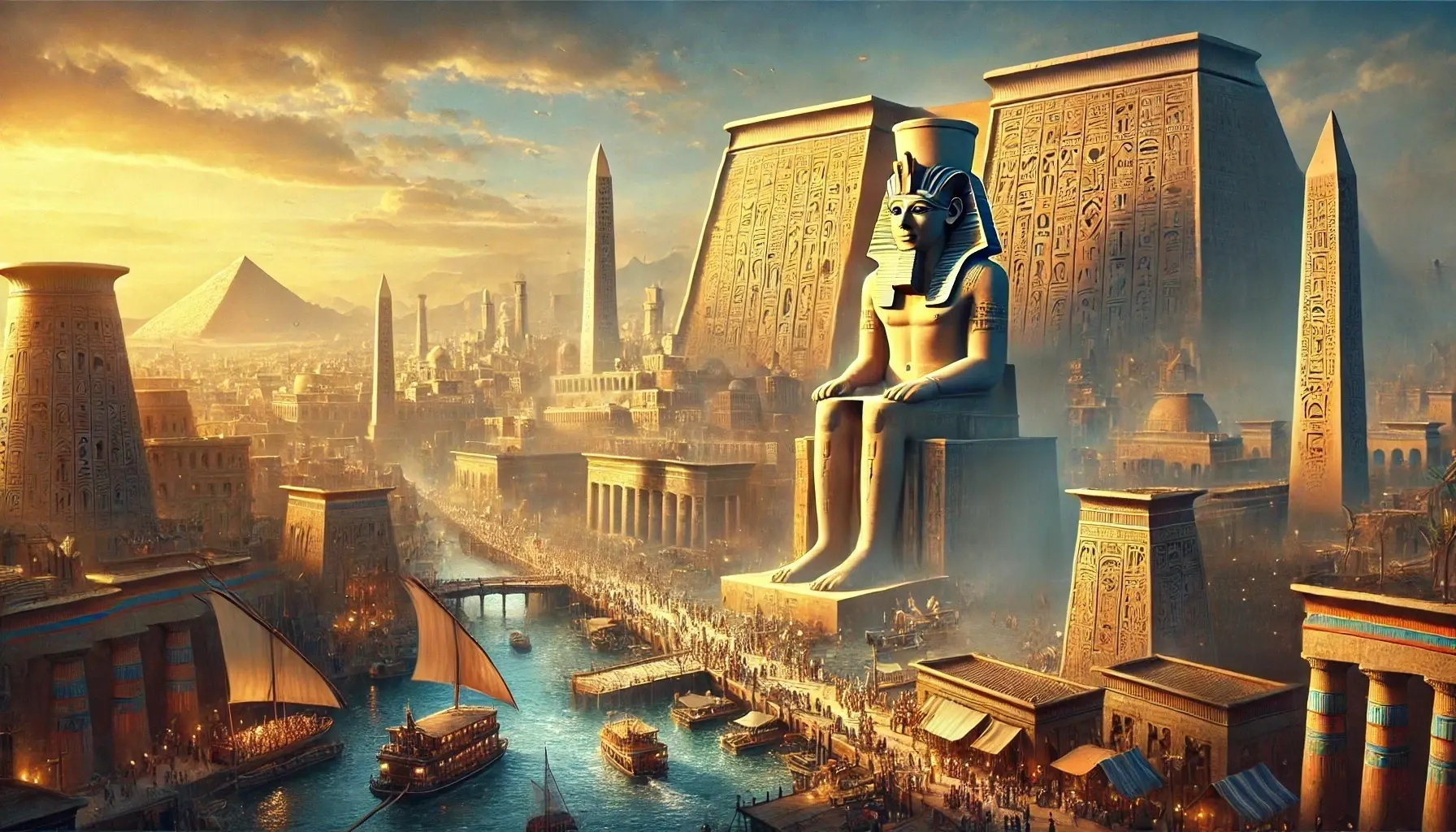The Birth of a Legend
A City Forged by Gods and Kings
In the misty dawn of Egyptian civilization, where the Nile’s fertile embrace met the arid expanse of the desert, Memphis rose as a testament to divine will and human ambition. Founded around 3100 BCE by the legendary Pharaoh Narmer (or Menes, as some ancient sources call him), this city was no mere settlement—it was a cosmic statement. Narmer, the unifier of Upper and Lower Egypt, chose this strategic location near the apex of the Nile Delta to establish his capital, a place where the Two Lands could be governed as one.
The city’s name, Inbu-Hedj, meaning “White Walls,” referred to the gleaming limestone fortifications that encircled it, a symbol of purity and power. To the Greeks, it became Memphis, a name echoing the pharaoh’s palace, Men-nefer, “Enduring and Beautiful.” From its inception, the city was imbued with a sense of destiny, a place where gods walked among mortals and the pharaohs ruled as their earthly representatives.
The Heartbeat of Ancient Egypt
A Crossroads of Culture and Commerce
Memphis was not just a political capital; it was the pulsating heart of a civilization. Situated at the crossroads of trade routes, it thrived as a hub of commerce, culture, and craftsmanship. The Nile, that life-giving artery, brought goods from as far south as Nubia and as distant as the Levant. Merchants, artisans, and diplomats flocked to its bustling markets, where the scent of incense mingled with the tang of freshly forged bronze.
The city’s workshops were renowned for their exquisite artistry. Sculptors carved statues of gods and kings from gleaming alabaster, while jewelers fashioned gold and lapis lazuli into ornaments fit for royalty. Memphis was also a center of learning, where scribes meticulously recorded the wisdom of the ages on papyrus scrolls, preserving the knowledge of astronomy, medicine, and magic.
The Divine Presence: Ptah and the Sacred Bulls
At the spiritual core of Memphis stood the great Temple of Ptah, one of Egypt’s most revered deities. Ptah, the god of craftsmen and creation, was believed to have spoken the world into existence. His temple was a place of awe-inspiring grandeur, its halls adorned with colossal statues and its altars perpetually lit by sacred flames.
Nearby, the Serapeum housed the Apis bulls, living incarnations of Ptah. These sacred animals, with their distinctive black-and-white markings, were worshipped as intermediaries between the divine and the mortal realms. Upon their death, they were mummified and entombed in massive sarcophagi, a practice that continued for centuries, reflecting the city’s enduring devotion to its gods.
The Rise and Fall of a Metropolis
The Golden Age of Memphis
For over a millennium, Memphis reigned as Egypt’s preeminent city. During the Old Kingdom (2686–2181 BCE), it was the stage for some of the most iconic achievements of ancient civilization. The nearby necropolis of Saqqara, with its step pyramid of Djoser, marked the dawn of monumental architecture. The pharaohs of the Fourth Dynasty, including Khufu and Khafre, built their pyramids at Giza, just a short distance from the city, ensuring that Memphis remained at the center of Egypt’s cosmic order.
Even as the political capital shifted to Thebes during the New Kingdom, Memphis retained its cultural and religious significance. Pharaohs like Ramses II adorned the city with new temples and monuments, ensuring its legacy would endure.
The Twilight of a Titan
Yet, like all great cities, Memphis was not immune to the passage of time. The rise of Alexandria under the Ptolemies shifted the center of power to the Mediterranean coast. Natural disasters, including the shifting course of the Nile, gradually eroded the city’s vitality. By the time of the Arab conquest in the 7th century CE, Memphis was a shadow of its former self, its once-mighty temples crumbling into the sand.
Rediscovering Memphis: A Modern Quest
Unearthing the Past
Today, the ruins of Memphis lie scattered across the village of Mit Rahina, a silent testament to its former glory. Archaeologists have unearthed fragments of its grandeur: the colossal statue of Ramses II, now lying in a purpose-built museum; the alabaster sphinx, a symbol of royal power; and the remains of the Temple of Ptah, where echoes of ancient hymns still seem to linger in the air.
These discoveries offer tantalizing glimpses into the city’s past, yet much of Memphis remains buried, its secrets waiting to be uncovered. Each excavation brings us closer to understanding the lives of those who walked its streets, from the pharaohs who ruled with divine authority to the laborers who toiled to build their monuments.
A Legacy That Endures
Though the city itself has faded, its legacy lives on. Memphis shaped the cultural and spiritual identity of ancient Egypt, influencing everything from art and architecture to religion and governance. Its name echoes in the modern world, from the American city on the banks of the Mississippi to the music that bears its name, a testament to its enduring allure.
Conclusion: The Eternal City
Memphis was more than a city; it was a symbol of unity, a beacon of civilization, and a bridge between the mortal and the divine. Its story is one of triumph and decline, of grandeur and decay, yet it remains a source of inspiration and wonder. As we walk among its ruins, we are reminded of the impermanence of human achievement—and the timeless power of memory.
In the words of the ancient Egyptians, “To speak the name of the dead is to make them live again.” Memphis, though long gone, lives on in the stories we tell, the monuments we uncover, and the dreams it continues to inspire.



